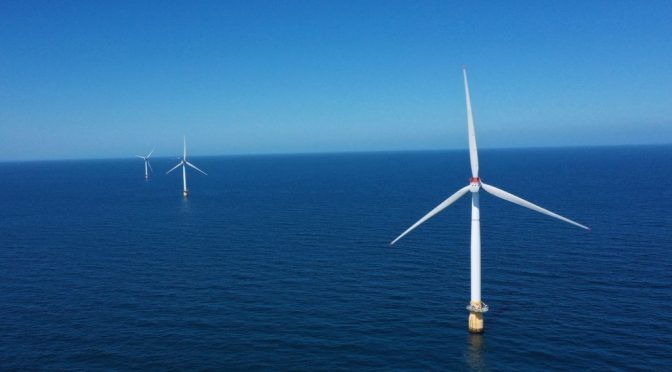Equinor has confirmed it has bid for floating offshore wind in ScotWind, the competitive tender offshore wind seabed leasing round being undertaken by Crown Estate Scotland.
The offshore energy company says the ScotWind Leasing round is a good strategic fit with its ambitions to continue to develop its North Sea offshore wind cluster and further deepen its presence across the UK.
With around half of the sites being floating offshore wind opportunities, the offshore energy company believes the Scottish Government is offering a great opportunity to develop large floating offshore wind projects at scale.
Equinor has more than a decade of operating experience from floating offshore wind and is the world’s leading floating offshore wind developer with floating wind turbines already deployed and producing electricity at Hywind, located off the northeast coast of Scotland.
Since Hywind Scotland started operations in 2019, the flagship project consistently provided the highest capacity factor among all UK offshore wind farms, proving the true potential of applying floating wind technology to get access to the best wind sources.
“Equinor has the experience and capabilities necessary to develop the next full-scale floating offshore wind farm in Scotland following Hywind Scotland. By leveraging our offshore execution capabilities and our leading position in floating offshore wind, we are ready to create more long-term value and drive the industrialisation of floating offshore wind further. We see floating wind as an enabler for the Scottish Government to achieve its offshore wind targets and help reach its ambitious net zero target of 2045,” says Equinor’s senior vice president for business development in Renewables, Jens Økland.
The Scottish Government has committed to reduce emissions to net zero by 2045, one of the most ambitious targets globally. To support this ambition, they have set a target to deliver up to 11GW of offshore wind capacity by 2030.
Equinor’s offshore wind strategy is to create value through early access at scale and deepening in regional clusters. The North Sea has among the world’s best wind resources and is Equinor’s largest and most mature offshore wind cluster, making it the backbone of Equinor’s offshore wind portfolio.
In Scotland, Equinor has a broad range of activities that are contributing towards a sustainable energy transition.
As operator of Hywind Scotland, the world’s first floating offshore wind farm located near Peterhead, the offshore energy company knows the potential that lies in developing offshore wind off the Scottish coast.
Also at Peterhead, Equinor together with its partner, SSE Thermal, plans to jointly develop a new low-carbon power station, which could become one of the UK’s first power stations equipped with carbon capture technology. The Peterhead CCS Power Station would propel the UK’s ambitions for carbon capture in power generation, meeting 15% of the UK Government’s 10 million tonne target for carbon captured by 2030.
“A net zero world needs offshore wind to grow fast and at scale. We are an offshore energy company playing to our strengths, leveraging our execution capabilities and our leading position in floating offshore wind. Applying these capabilities in developing large-scale offshore wind projects and low carbon technologies puts us in a strong position to create long term value for shareholders and support the UK in reaching its net zero targets,” says Økland.
Equinor’s upstream operations headquarters are based in Aberdeen employing around 500 people onshore and offshore including the operations of the Mariner field, east of Shetland.
Equinor
Equinor is committed to long term value creation in a low carbon future and targeting carbon neutral operations globally by 2030.
In total Equinor currently powers around 750,000 UK homes through its three offshore wind farms Sheringham Shoal (317MW), Dudgeon (402MW) and Hywind Scotland (30MW).
Equinor is also a partner in the world’s biggest offshore wind farm, Dogger Bank, which is currently under construction. At 3.6GW this wind farm will be the largest in the world, and a flagship for digitalization and innovation. Equinor will operate the wind farm from the North East of England for its lifetime of up to 35 years.
The offshore wind major is also planning to extend its Dudgeon and Sheringham Shoal wind farms, doubling (719MW) the offshore wind capacity off the coast of Norfolk.
In the Norwegian North Sea, Equinor is currently constructing the world’s largest floating offshore wind farm under development, Hywind Tampen (88 MW) which will go online in 2022.
Equinor has managed to bring the cost down for each floating offshore wind project it has developed: Between Hywind demo in 2009 and Hywind Scotland in 2017 the company reduced capex per megawatt by 70%. The offshore wind major is on track to reduce costs further by more than 40% for Hywind Tampen, which will come online in the Norwegian North Sea next year.


